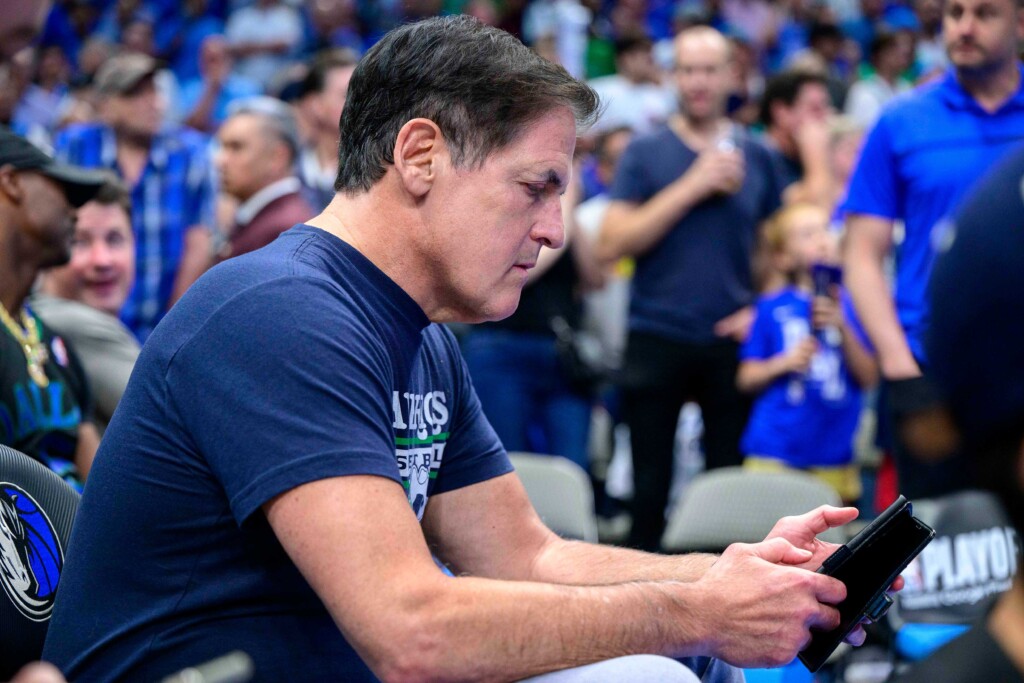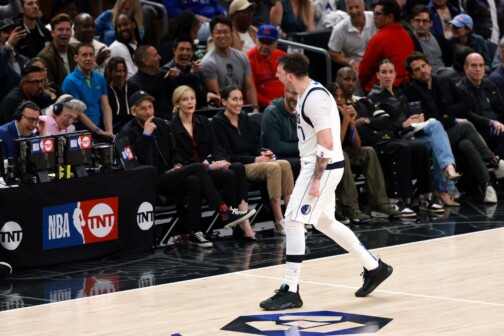“Danny Ainge on Line 2.”
The voice came through on my phone while Donnie Nelson, the Mavericks’ president of basketball operations, talked on another line across the desk from me. The dog days of summer 2003. I was sitting in an office in the American Airlines Center surrounded by cluttered white boards overlooking an empty practice court and about to talk to the man running the Boston Celtics. This was a large part of my life in the offseason when I worked in basketball operations for the Mavs. While the summer is a time for players to rest, recharge, and regroup, it is the most important time of the year for the front office—a time when decisions make the biggest impact on the fate of the franchise.
And this offseason seems more crucial than most for the Mavericks. In today’s player empowerment era, the only thing more difficult than getting a superstar might be building around one. The hopes of Mavs fans rest on what transpires behind those closed doors in the practice facility. So what exactly is the Mavs’ braintrust doing? Let’s go inside and walk through the various tasks that Nico Harrison, Dennis Lindsey and their colleagues have on their plate as we examine the offseason life of an NBA front office operative.
Intel gathering
Information is the currency of the offseason, and multiple levers must be pulled to acquire it. When I was in the front office, we called every team in the league, every day. The gauging of the market is constant, seeing what value your players have and seeing what the marketplace is for opposing players as well as identifying the needs of other teams. I built a trade machine on my computer (before the feature was available online) and input variables and suggested tweaks. Deals rarely, if ever, came out of the calls, but they served a purpose. Sometimes the calls were 10 seconds long and simply asked about the kids at home, but we checked in so that when it was time to make a deal, the information was at hand and the foundation had been laid. It’s all about constant communication, whether through calls or texts.
It’s not just other executives. It’s reporters, too. Why is information leaked to reporters? It is a quid pro quo. Sometimes you give a reporter a nugget in order to set a narrative and get something back that won’t be reported but helps in intel gathering. There is also the tea-leaf reading of reports that don’t come from inside the room, determining where the info came from, who benefits from its release, and gauging its veracity.
Detailed Draft and Free Agency Preparation
The Hornets were on the clock at the 2015 draft, about to pick Frank Kaminsky with the ninth overall selection. But the Celtics had their eye on Justise Winslow and were looking to move up. Charlotte had a quick decision to make: stick with Kaminsky or take the four first-round picks Boston was offering and slide down. The Hornets passed on the deal. Why? They weren’t prepared to draft players in the range those picks were in. That front office didn’t last long.
Whether they have no picks or multiple picks, the Mavericks scout and then post a draft board of players from 1 through 60. As a result, they are prepared to pick anyone at any time, anywhere on the board. Even if Harrison is canvassing the league with an eye toward trading the 10th pick in this year’s draft, he continues to prepare, attending the combine in Chicago and workouts in California. He is bringing in players for workouts (per team policy, the Mavs don’t announce who they’re inviting in), reviewing notes from player interviews and medical reports, and meeting with his scouts who have been all around the country and overseas watching these players all year. Debate and wargaming on what to do with that all-important asset is done well in advance of the June 22 draft.
We all know free agency maneuvering starts before 5 p.m. on June 30, but even when conversations can start happening for real, I have written before about how all plans launch simultaneously. These plans are formulated weeks in advance. Analytics are reviewed; priority lists are made. There is a new collective bargaining agreement to digest and league trends to evaluate. All of this is used to inform strategy.
Summer League
The second the draft ends, the race to sign undrafted free agents begins. Only 60 players are selected and the rest are up for grabs to be signed to Exhibit-10 contracts. Summer League rosters are filled out. Players from Summer League can fill training camp spots or are up for potential two-way contracts. I wrote last month how the Miami Heat have thrived finding players in the bargain bin (like Caleb Martin and Gabe Vincent) and how this must be a focus for the Mavs. That will only hold more true with a new, more onerous salary-cap apron, which imposes heavy restrictions on team-building for the highest-spending teams, a stratosphere the Mavs will be in if Kyrie Irving returns.
Summer League serves two other purposes. First, Mavs scouts will watch all the other teams in case they like players from other rosters to sign after the tournament. Summer League is also the NBA’s version of the baseball winter meetings. During games in Las Vegas, the baselines behind the baskets feature more gossip-trading among league operatives than an episode of Real Housewives.
Coordination With Your Own Players
The Mavs have eight players under contract, most of whom will be gone all offseason, returning a few weeks before training camp begins. (There are no OTAs in basketball.) The training and conditioning staff as well as player development coaches keep in contact with players on their training regimens and nutrition plans. Trips to see players in their home cities (or countries) are also on the agenda to coordinate not only with the player but also his trainer. Luka Doncic’s continued development is tied to his commitment to his conditioning; Jason Kidd said as much. Nikola Jokic changed his body and became a two-time league MVP after the disappointment of an early 2019 playoff exit. Working with Doncic after his own early end to the season can yield the same results.
Staff Evaluation
When I worked in the front office, basketball operations had about a dozen people in it. This year the Mavs had more than 60. It’s an organization all its own and requires proper leadership, culture, and management. The offseason is when we see staff evaluations and turnover up and down the department. Dennis Lindsey, a former general manager and executive vice president of basketball operations with the Utah Jazz, was brought in as a sounding board and to add experience and more brainpower to the highest levels of decision-making. Greg St. Jean was let go as a bench coach, and the process of replacing him continues, as intriguing names fall off and pop up on the list. Evaluating what the expectation is from that role informs that process.
The Stuff You Don’t Think About
The NBA is a relationship business. It’s one of the main reasons Harrison was hired to run basketball operations. Among the most important ties to cultivate are with agents, who are the gatekeepers and a powerful force in the league. Establishing and maintaining good working relationships with them is essential.
One of the things that stood out to me when I got inside the room was how much work that involved. For example, an agent might have called about a WNBA player who wanted to play overseas in her offseason. (They make more money overseas, which is why Brittney Griner was playing in Russia.) The agent would ask for a recommendation or a connection to help facilitate the move. It would have nothing to do with the Mavs directly, yet everything to do with scratching the right backs. Contacts were needed overseas. Those relationships had to be fostered. And on and on.
It’s easy to say the Mavs need to get help or need to get it right. The question is how and what the work is that goes into it. Understanding what goes on inside the room during these crucial months can inform fans as they refresh Twitter waiting for the next development. For Harrison and company, there is much to gather, digest, and analyze. The task is knowing which of the balls constantly being juggled in the air this offseason can be allowed to fall and which have to be caught. It could be the difference between watching next year’s Mavericks advance deep into the playoffs or enduring another early exit.
I need to go now; my other phone is going off. It’s that time of year.
Author







